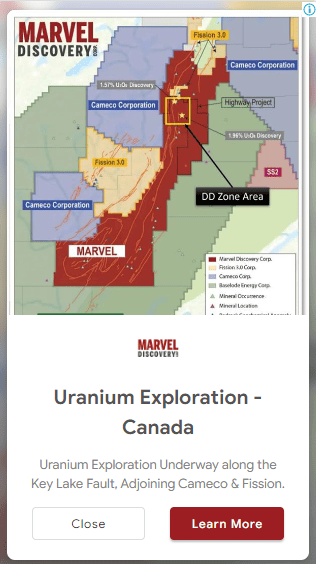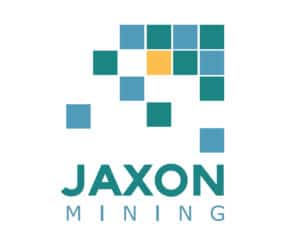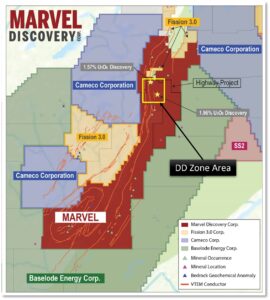2022-08-09 05:06:31
Vancouver, British Columbia–(Newsfile Corp. – August 9, 2022) – Sanu Gold Corporation (CSE: SANU) (“Sanu” or the “Company”) provides an update on its exploration activities on the Diguifara Gold Project located in northeastern Guinea within the Siguiri Basin that host the world-class Ashanti AngloGold +5.2Moz gold deposit.
Highlights
- 5,848 termite mound samples were collected on the Diguifara permit
- Sampling results define four gold anomalies with individual anomalies extending up to 7 km
- Thirty termite mound samples returned > 1 g/t Au, including 10.98g/t, 3.73g/t, 3.55g/t, 3.42g/t, 3.08g/t, 2.62g/t, 2.44g/t, 2.16g/t, 2.02g/t, 1.86g/t, 1.81g/t, 1.80g/t, 1.76g/t, and 1.53g/t
- Results define a parallel system of several north northwesterly and north-southerly-trending gold anomalies, coincident with structural corridors, interpreted as shear zone from field mapping and regional imagery
Martin Pawlitschek, CEO of Sanu Gold, commented: “The systematic work of our teams in the field again delineated area of significant gold anomalism coincident with major structural trends and artisanal mining of gold mineralization in the bedrock at the Diguifara project. The combination of rock chip sampling, mapping and auger drilling is expected to yield high value RC drill targets“
Geochemical Termite Mounds Sampling Results
A systematic 200 x 50m termite mound sampling grid for a total of 5,848 samples now covers the entire Diguifara permit. The results delineate four gold anomalous trends with individual trends extending for up to 7 km along strike. Thirty termite mound samples returned high-grade gold values including 10.98g/t, 3.73g/t, 3.55g/t, 3.42g/t, 3.08g/t, 2.62g/t, 2.44g/t, and 2.16g/t. Results indicate a strong correlation between the termite mound gold trends (contour >100 ppb Au) and trends of north northwest and north-south sub parallel structures interpreted from regional imagery and mapping of outcrops.
The most pronounced and consistent gold anomaly, DIG 1, extends for 7 km along strike and 400 meters width, trending in a north-northwest orientation. This anomaly is ranked as a primary target for drilling based on its strong correlation with major NNW-trending shear zone systems interpreted from regional imagery and mapping. The gold anomaly lies adjacent to the thrust contact between volcanoclastic rocks and a sedimentary sequence. Highly altered, sheared, and brecciated sediment and volcanoclastic rocks characterize the fault zone in outcrop. Local artisanal mining is widespread along the length of the DIG 1 anomaly. Local mining mostly targets gold nuggets from superficial eluvium and colluvium materials within corridor, but some gold is also extracted from the weathered bedrock.
A second anomaly, DIG 2, is characterized by a series of well-structured north northwest-trending sub parallel trends of gold anomalism with individual zones extending for over 5km. This anomaly is consistent with a secondary, parallel set of NNW-trending shear zone systems interpreted from regional imagery and geological mapping. The underlying lithology is dominated by a sequence of volcanoclastic rocks that host numerous parallel sets of quartz veins. There are significant artisanal mining activities in this zone that target these mineralized vein systems within the weathered, altered and deformed volcanoclastic host rocks.
The third anomalous zone, DIG 3, extends over 1.7km of strike by 500m width and forms the northern extension of the DIG 1 target. This large anomaly is characterized by consistent anomalous gold values in termite mounds, with values including 1.6g/t and 1.27g/t Au. The anomaly trends north-northwest and is at or close to the major faulted and thrusted contact between altered volcanoclastic rocks and the sedimentary sequence. Local artisan mining pits are widespread along the anomaly, extracting gold from exposed quartz veins.
The final zone, DIG 4, is located on the northern portion of the permit, and is characterized by a series of north-south-trending sub parallel gold anomalies, extending for over a 5km long and 1.5Km wide corridor. This anomaly contains numerous termite mound samples returning high-grade anomalous gold values, including 10.9g/t, 3.7g/t, 3.5g/t, and 1.3g/t Au. Local artisan mining pits are widespread in this zone extracting gold from altered saprolite ore and exposed quartz veins.
A significant alluvial channel underlies the high gold geochemical values in the far north of the permit area. Local artisan mining activities are focused on buried gravel deposits in this area that follows a broad valley.
Conclusion and Next Steps
The successful termite mound geochemical program at Diguifara delineated four significant kilometer scale gold anomalies that are aligned with the structural trends known in the region and in some locations host artisan gold mining activities on weathered bedrock.
Rock chip sampling has been conducted where exposures of bed rock exist and auger drilling is used to allow systematic sampling of the weather bedrock in laterite covered areas. An 11,000m auger program is in the process of being completed and it is expected that this will yield targets for RC drill testing.
QA/QC
Sampling was completed following industry best practices, conducted under the supervision of experienced Company project geologists and the chain of custody from the project site to the sample preparation facility was continuously monitored. An appropriate number and type of certified reference materials (standards) and blanks amounting 5% of the total number of samples, shipped to the laboratory, was inserted approximately every 20th sample to ensure an effective QAQC program. Data verification of the analytical results included a statistical analysis of the standards and blanks that must pass certain parameters for acceptance to ensure accurate and verifiable results. All samples were analyzed using ”Leach Well geochemical analysis LWL69M” at the SGS Laboratory in Bamako, Mali. SGS is an independent, internationally recognized and certified commercial laboratory.
 Figure 1: Geology map of the Diguifara Project Exploration Permits and termite mound gold anomalies.
Figure 1: Geology map of the Diguifara Project Exploration Permits and termite mound gold anomalies.
Qualified Persons
The technical or scientific information in this press release has been reviewed and approved by Serigne Dieng, PhD., M.Sc., AIG, Exploration Manager of the company’s three projects, who serves as a qualified person under the definition of National Instrument 43-101.
About Sanu Gold
Located within the world class Siguiri Basin, host to several operating mines, Sanu is exploring three high quality gold exploration permits in Guinea targeting multi-million ounce gold discoveries. The company has defined kilometer scale gold bearing structures on each of the permits with multiple high-value drill targets. Sanu is operated by a highly experienced team with successful records of discovery, resource development and mine permitting.
Martin Pawlitschek
President & CEO, Sanu Gold Corp
For further information regarding Sanu, please email This email address is being protected from spambots. You need JavaScript enabled to view it. or visit website at www.sanugoldcorp.com
Neither the Canadian Securities Exchange nor its Regulation Services Provider accepts responsibility for the adequacy or accuracy of this release.
Cautionary Note Regarding Forward-Looking Statements
This news release contains certain statements that may be deemed “forward-looking statements” with respect to the Company within the meaning of applicable securities laws. Forward-looking statements are statements that are not historical facts and are generally, but not always, identified by the words “expects”, “plans”, “anticipates”, “believes”, “intends”, “estimates”, “projects”, “potential”, “indicates”, “opportunity”, “possible” and similar expressions, or that events or conditions “will”, “would”, “may”, “could” or “should” occur. Although Sanu believes the expectations expressed in such forward-looking statements are based on reasonable assumptions, such statements are not guarantees of future performance, are subject to risks and uncertainties, and actual results or realities may differ materially from those in the forward-looking statements. Such material risks and uncertainties include, but are not limited to, the Company’s plans for exploration on its properties and ability to execute on plans, ability to raise sufficient capital to fund its obligations under its property agreements going forward, ability to maintain its material property agreements, mineral tenures and concessions in good standing, to explore and develop its projects; changes in economic conditions or financial markets; the inherent hazards associated with mineral exploration and mining operations, future prices of gold and other metals, changes in general economic conditions and local risks in the jurisdiction (Guinea) in which it operates, accuracy of mineral resource and reserve estimates, the potential for new discoveries, the ability of the Company to obtain the necessary permits and consents required to explore, drill and develop the projects and if obtained, to obtain such permits and consents in a timely fashion relative to the Company’s plans and business objectives for the projects; the general ability of the Company to monetize its mineral resources; and changes in environmental and other laws or regulations that could have an impact on the Company’s operations, compliance with environmental laws and regulations, dependence on key management personnel and general competition in the mining industry. Forward-looking statements are based on the reasonable beliefs, estimates and opinions of the Company’s management on the date the statements are made. Except as required by law, the Company undertakes no obligation to update these forward-looking statements in the event that management’s beliefs, estimates or opinions, or other factors, should change.








